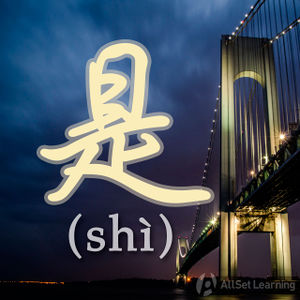The "shi... de" construction for indicating purpose
-
Level
-
Similar to
-
Used for
-
Keywords
| This article is a stub. Editors can help the Chinese Grammar Wiki by expanding it. |
There are many ways to explain why you are doing something or what's the use of things. This article will explain another way to do that, and it just happens to involve "是⋯⋯的." This isn't to say that you can't make these sentences without using "是" and "的" but this can help emphasize why you are doing something or what's the use of thing, giving your sentence a little more kick.
Contents
When the subject is a person
Structure
If the subject is a person, there is often a "来" or "去" after the "是", indicating direction like "coming here" or "going there."
Person + 是 + 来 / 去 + Verb Phrase + 的
Examples
- 我 是 来 上海 旅游 的。I came to Shanghai to travel.
- 你 要 记住,你 是 去 (学校) 学习 的,不 是 去 玩 的。You need to remember, you went (to school) to study.
- 你 真的 是 来 帮 我们的 吗?Are you here to help us? Really?
- 她 是 来 这儿 实习 的。She came here to do an internship.
- 我们 都 是 做 生意 的。We are all here doing business.
When the subject is a person
Structure
If the subject is a thing, "用来" is often used. Look at the examples below for some more clarification.
Thing + 是 + 用来 + Verb Phrase + 的
- 钱 是 用来 花 的。Money is for spending.
- 这 个 房间 是 用来 放 的。This room is for putting all of our ju.
- 是 用来 做 三明治的。This kind of bread is for making sandwiches.
- 这 种 面包 是 用来 做 三明治的。This kind of bread is for making sandwiches.
- 这 种 面包 是 用来 做 三明治的。This kind of bread is for making sandwiches.
See Also



